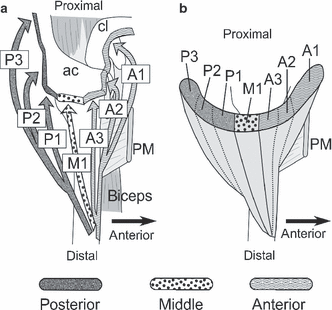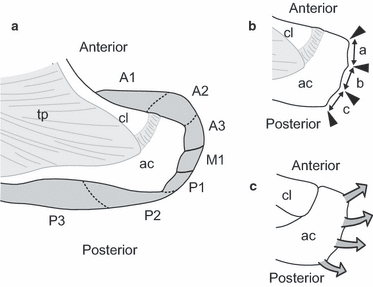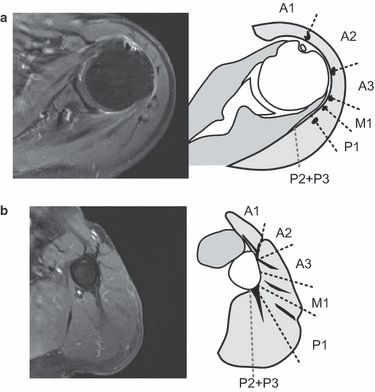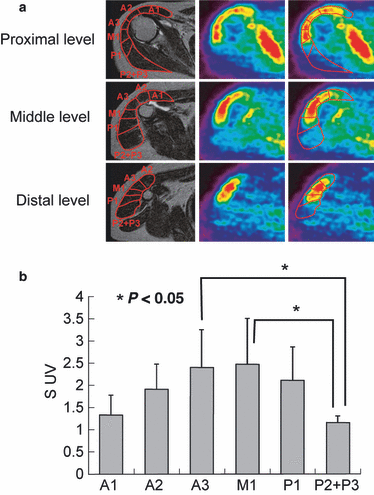Anatomical and functional segments of the deltoid muscle
- PMID: 21118198
- PMCID: PMC3042752
- DOI: 10.1111/j.1469-7580.2010.01325.x
Anatomical and functional segments of the deltoid muscle
Abstract
Previous studies showed that the insertion of the intramuscular tendons of the deltoid muscle formed three discrete lines. The purpose of the present study was to establish a new dividing method of the deltoid muscle into various anatomical segments based on the distribution of the intramuscular tendons with their insertions (anatomical study). We further hoped to clarify the relationship between the anatomical segments and their activity pattern assessed by positron emission tomography with [¹⁸F]-2-fluoro-deoxyglucose (FDG-PET; PET study). Sixty cadaveric shoulders were investigated in the anatomical study. Three tendinous insertions of the deltoid muscle to the humerus were identified. Then, the intramuscular tendons were traced from their humeral insertions to the proximal muscular origins. The extent of each anatomical segment of the muscle including its origin and insertion was determined through careful dissection. Six healthy volunteers were examined using FDG-PET for the PET study. PET images were obtained after exercise of elevation in the scapular plane. On the PET images, margins of each anatomical segment of the deltoid muscle were determined using magnetic resonance images. Then, the standardized uptake value in each segment was calculated to quantify its activity. The anatomical study demonstrated that the deltoid muscle was divided into seven segments based on the distribution of its intramuscular tendons. The PET study revealed that the intake of FDG was not uniform in the deltoid muscle. The area with high FDG intake corresponded well to the individual muscular segments separated by the intramuscular tendons. We conclude that the deltoid muscle has seven anatomical segments, which seem to represent the functional units of this muscle.
© 2010 The Authors. Journal of Anatomy © 2010 Anatomical Society of Great Britain and Ireland.
Figures






References
-
- Brown JM, Wickham J. Neuromotor coordination of multisegmental muscle during a change in movement direction. J Musculoskelet Res. 2006;10:63–74.
-
- Brown JM, Wickham J, McAndrew DJ, et al. Muscles within muscles: coordination of 19 muscle segments within three shoulder muscles during isometric motor tasks. J Electromyogr Kinesiol. 2007;17:57–73. - PubMed
-
- Fick R. Handbuch der Anatomie und Mekanik der Gelenke. Jena: Gustav Fischer; 1911.
-
- Finni T. Structural and functional features of human muscle-tendon unit. Scand J Med Sci Sports. 2006;16:147–158. - PubMed
MeSH terms
Substances
LinkOut - more resources
Full Text Sources

